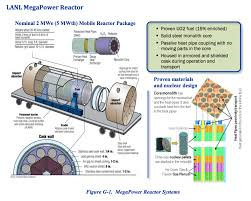
Breaking News
6.5x55 Swedish vs. 6.5 Creedmoor: The New 6.5mm Hotness
Best 7mm PRC Ammo: Hunting and Long-Distance Target Shooting
 Christmas Truce of 1914, World War I - For Sharing, For Peace
Christmas Truce of 1914, World War I - For Sharing, For Peace
Top Tech News
 EngineAI T800: Born to Disrupt! #EngineAI #robotics #newtechnology #newproduct
EngineAI T800: Born to Disrupt! #EngineAI #robotics #newtechnology #newproduct
 This Silicon Anode Breakthrough Could Mark A Turning Point For EV Batteries [Update]
This Silicon Anode Breakthrough Could Mark A Turning Point For EV Batteries [Update]
 Travel gadget promises to dry and iron your clothes – totally hands-free
Travel gadget promises to dry and iron your clothes – totally hands-free
 Perfect Aircrete, Kitchen Ingredients.
Perfect Aircrete, Kitchen Ingredients.
 Futuristic pixel-raising display lets you feel what's onscreen
Futuristic pixel-raising display lets you feel what's onscreen
 Cutting-Edge Facility Generates Pure Water and Hydrogen Fuel from Seawater for Mere Pennies
Cutting-Edge Facility Generates Pure Water and Hydrogen Fuel from Seawater for Mere Pennies
 This tiny dev board is packed with features for ambitious makers
This tiny dev board is packed with features for ambitious makers
 Scientists Discover Gel to Regrow Tooth Enamel
Scientists Discover Gel to Regrow Tooth Enamel
 Vitamin C and Dandelion Root Killing Cancer Cells -- as Former CDC Director Calls for COVID-19...
Vitamin C and Dandelion Root Killing Cancer Cells -- as Former CDC Director Calls for COVID-19...
 Galactic Brain: US firm plans space-based data centers, power grid to challenge China
Galactic Brain: US firm plans space-based data centers, power grid to challenge China
Los Alamos self regulating reactors from tens of kilowatts for NASA to several megawatts

NASA has focused on the use of KiloPower for potential Mars human exploration. NASA has examined the need for power on Mars and determined that approximately 40 kilowatts would be needed. Five 10-kilowatt KiloPower reactors (four main reactors plus one spare) could solve this power requirement.
During steady state, a reactor operates with a neutron multiplication factor of '1.000'; that is, the number of neutrons in the core remains unchanged from one generation to the next generation.
Almost every perturbation in a reactor's operation ultimately translates into either a positive or a negative reactivity insertion incident, defined as the state in which the core neutron multiplication factor deviates from its steady state value. Sudden and significant positive reactivity insertion can lead to runaway reactor kinetics, wherein temperatures can exceed thermal limits very rapidly.

 The State's Last Stand
The State's Last Stand


